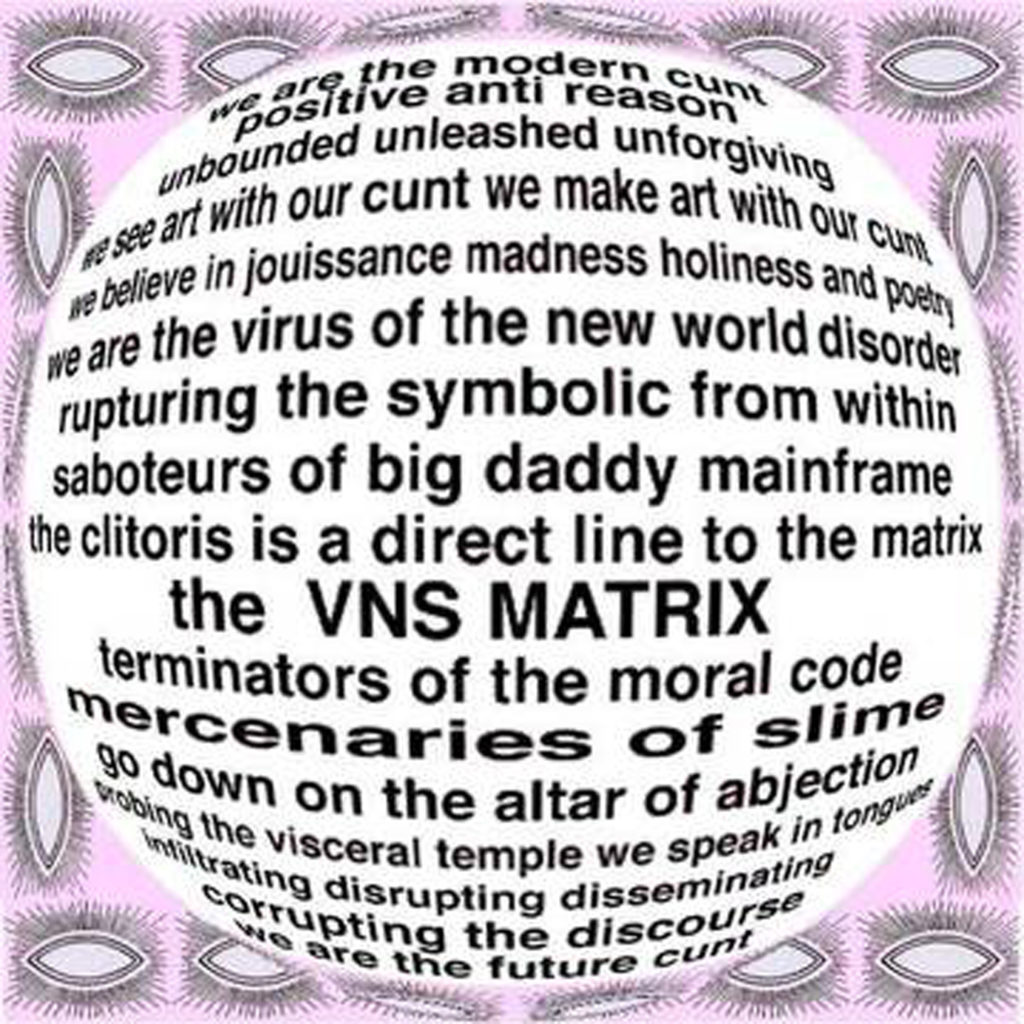FEMINIST READINGS: CYBORG WOMEN & PERFORMATIVE GENDER
What if this amazing surge in new technology was used to defy gender stereotypes, inspiring us to look at ourselves in new ways?
Postfeminist Donna Harraway’s collection of essays in ‘Simians, Cyborgs, and Women: The Reinvention of Nature’ is almost 30 years old, though her views on science and technology and the role of gender still remain fascinating. She deals with the critique of nature as universal, and its totalising power of natural science whilst urging feminists to understand nature as a construction. She praises Judith Butler’s discontentment of sex or nature categories and belief in exposing the illusion of the organising gender core. Her development of the concept of gender performativity to capture the process through which bodies are materialised as sexed bodies do exactly that. Subjects do not simply internalise the positions or cultural norms that their specific gender is ‘supposed’ to inhabit - they instead struggle with the contradictions.
The image of the cyborg in ‘A Cyborg Manifesto’ represents a transcendence of the boundaries of biology and rejection of the foundations of patriarchy. It is an anti-essentialist, post-gender creature and manages to escape patriarchal oppression as a result; The cyborg creates its own identity. The cyborg is as much machine as it is human, making technology the determining factor which makes this kind of feminism possible.
This ideas have given birth to numerous genres of contemporary feminism. Cyberfeminism, not a term that Harraway uses, bases itself on these ideas; that, in conjunction with technology, it is possible to construct your identity, sexuality and even your gender - just as you please. In contrast to the feminism that some call the ‘political-correctness’ movement that concentrates on legislating against behaviours deemed inappropriate, cyber feminists revel in polymorphous perversity. See Australian art group VNS Matrix’s manifesto for example:
CYBERFEMINIST MANIFESTO FOR THE 21ST CENTURY
We are the modern cunt
positive anti reason
unbounded unleashed unforgiving
we see art with our cunt we make art with our cunt
we believe in jouissance madness holiness and poetry
we are the virus of the new world disorder
rupturing the symbolic from within
saboteurs of big daddy mainframe
the clitoris is a direct line to the matrix
VNS MATRIX
terminators of the moral codes
mercenaries of slime
go down on the altar of abjection
probing the visceral temple we speak in tongues
infiltrating disrupting disseminating
corrupting the discourse
we are the future cunt
- Manifesto first declared by VNS Matrix
1991, Adelaide & Sydney, Australia
Xenofeminism, an offshoot of cyberfeminism similarly engages with these ideas; I am most inclined to agree which this approach than any other feminist theory mentioned above. They argue that cyberfeminism was no longer relevant when it came to the most urgent issues in the digital sphere such as online sexual harassment and the protection of images online.
They take a genuine interest in how we might design technological processes for gender political ends such as pharmaceuticals, 3D printing and other remarkable opportunities. Xenofemism refuses to accept the immutability of nature, but does not deny the shaping influence of the biological. They seek to unpick any weaponised markers of identity that harbour injustices and rejects the validity of any social order anchored in identities as a basis of oppression.

WE NEED TO OPERATE DIFFERENTLY AS A SPECIES NOW. BIOLOGY IS NOT DESTINY. IT IS NOT DESTINY BECAUSE BIOLOGY ITSELF CAN BE TECHNOLOGICAL TRANSFORMED.
IF NATURE IS UNJUST – CHANGE NATURE.
Signe Pierce, who refers to herself as a ‘reality artist’ explores these philosophical ideas through her work, often critiquing patriarchal regulations of female beauty. Most notably, her performance piece in collaboration with Alli Coates, American Reflexxx [2013] in which Pierce walked along a street in Myrtle Beach, South Carolina in a blue dress and platform heels wearing a mirrored mask that covered her face. I find the film incredibly moving, and shocking after aggressive comments suggesting she is a man get thrown at her from the general public. This eventually results in Pierce being pushed to the ground.
The film exposes terrifying societal views of gender and sexuality - “Will you do me in that later?” “It’s a SHIM” - and Pierce relinquishing control of the situation provides an un-choreographed reality of harassment and ‘mob mentality’. Does this idea of identity concealment in our digital age, where we are encouraged to constantly assert our identities on social media, pose a threat to society? By putting on the mask, are we viewed as inauthentic and less human? Is the group’s panic about Pierce’s identity concealment related to a wider social desire to be accessible and exposed on social platforms? It is interesting to consider online identity here - it seems that existing online as an avatar or anonymous person is allowed, but to do this in real life poses as a threat.
HOME
[CLICK ME]